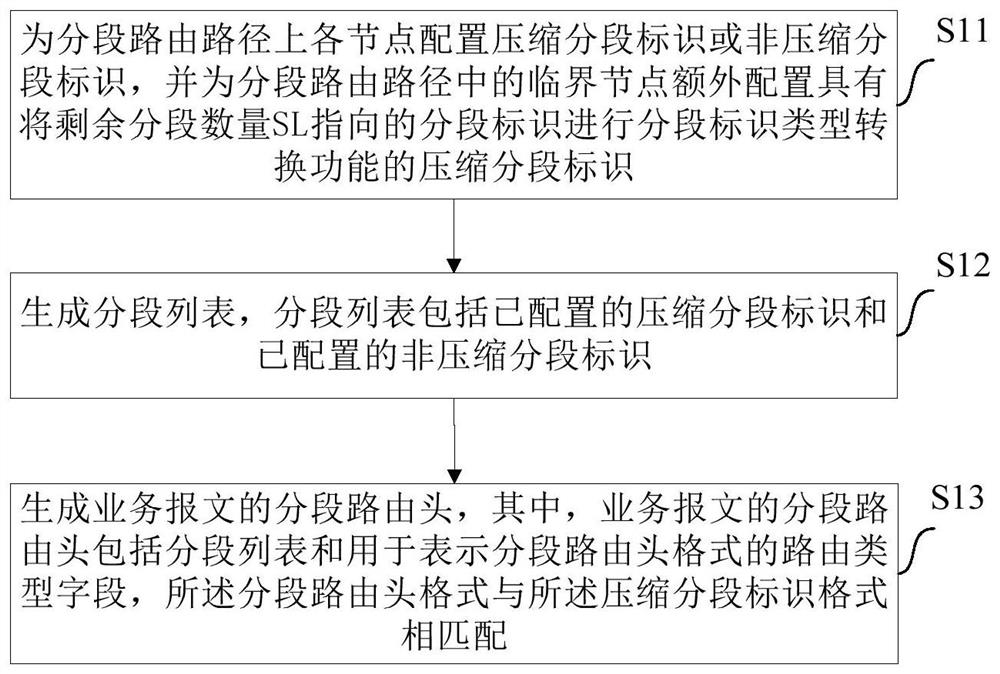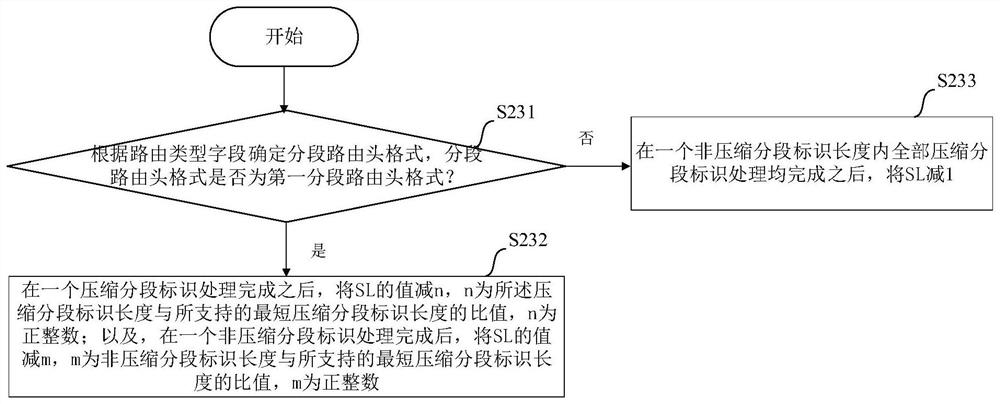Segmented route header compression method, service processing method and device
A compression method and routing head technology, applied in digital transmission systems, data exchange networks, electrical components, etc., can solve the problem of not allowing intermediate nodes, and achieve the effect of rapid deployment.
- Summary
- Abstract
- Description
- Claims
- Application Information
AI Technical Summary
Problems solved by technology
Method used
Image
Examples
Embodiment 1
[0136] The networking topology of Embodiment 1 is as follows Figure 4 As shown, there is an existing VPN4 service, and an SRv6 path of A-B-D-F-M-Z needs to be created, and the path involves mixed programming of compressed SID and non-compressed SID nodes. Among them, A-G nodes are configured with 32-bit compressed segment identifiers, and are compressed using the uSid compression scheme. The common prefix (uSID Block) of compressed SIDs is 32 bits, and each compressed segment identifier is 32 bits. Therefore, after removing the uSID Block in a 128-bit Can represent the compressed SID of 3 SRv6 nodes. Nodes M, N, and Z are configured with 128-bit uncompressed SIDs.
[0137] During the SRH compression process, the following definitions are made:
[0138](1) Define Flag=1 in the SRH to indicate that it is currently a compressed SID, and Flag=0 to indicate that it is currently an uncompressed SID.
[0139] (2) Define the first conversion function End.uzip (encoded as 0x77) of ...
Embodiment 2
[0151] The networking topology of Embodiment 2 is as follows Figure 9 As shown, there is an existing L2VPN service, and an SRv6 path of A-B-D-F-M-Z needs to be created, which involves mixed programming of compressed SID and non-compressed SID nodes. Among them, A-G nodes use 32-bit compressed SID, while M, N, and Z nodes are configured with 128-bit non-compressed SID. In this embodiment, the SRH is the second segment routing header format, that is, the newly defined SRH_Ext field is adopted, that is, Routing Type=6, and the SRH_Ext does not involve compatible processing with the existing SRH header.
[0152] During the SRH compression process, the following definitions are made:
[0153] (1) Define Flag=1 in SRH_Ext to indicate that it is currently a compressed SID, and Flag=0 to indicate that it is currently an uncompressed SID.
[0154] (2) Define the first conversion function End.uzip (encoded as 0x77) of the boundary node between compressed SID and uncompressed SID, to ...
Embodiment 3
[0164] The networking topology of Embodiment 3 is as follows Figure 9 As shown, there is an existing L2VPN service, and an SRv6 path of A-B-D-F-M-Z needs to be created, which involves mixed programming of compressed SID and non-compressed SID nodes. Among them, A-G nodes use 32-bit compressed SID, while M, N, and Z nodes are configured with 128-bit non-compressed SID. The difference between Embodiment 3 and Embodiment 2 is that the SRH in this embodiment is in the second segment routing header format, that is, no additional extension fields are added, but it is compatible with the existing SRH processing, that is, RoutingType=4.
[0165] During the SRH compression process, the following definitions are made:
[0166] (1) Define Flag=1 in the SRH to indicate that it is currently a compressed SID, and Flag=0 to indicate that it is currently an uncompressed SID. At this time, the Flag seen by the node with the uncompressed SID (such as the M node) is 0, which is the same as th...
PUM
 Login to View More
Login to View More Abstract
Description
Claims
Application Information
 Login to View More
Login to View More - R&D
- Intellectual Property
- Life Sciences
- Materials
- Tech Scout
- Unparalleled Data Quality
- Higher Quality Content
- 60% Fewer Hallucinations
Browse by: Latest US Patents, China's latest patents, Technical Efficacy Thesaurus, Application Domain, Technology Topic, Popular Technical Reports.
© 2025 PatSnap. All rights reserved.Legal|Privacy policy|Modern Slavery Act Transparency Statement|Sitemap|About US| Contact US: help@patsnap.com



